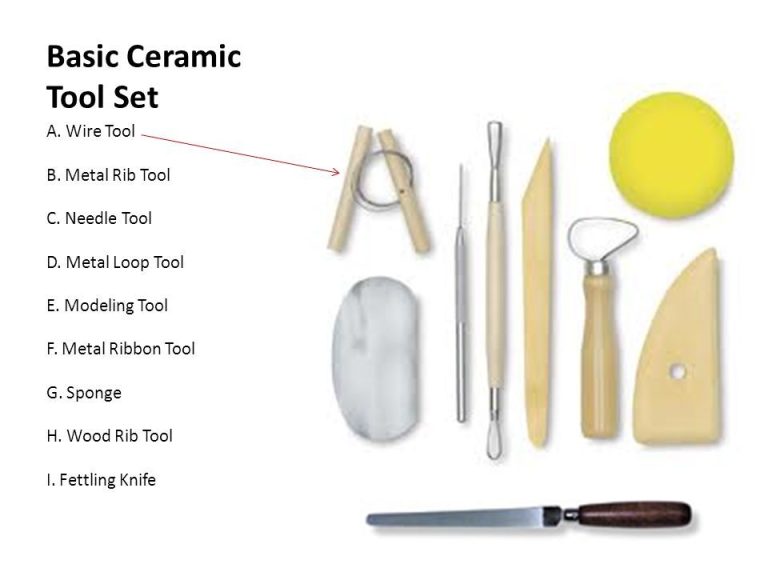Can Air Dry Clay Be Durable?
What is Air Dry Clay?
Air dry clay, also known as modeling clay, is an art medium that is made from a malleable ceramic clay that dries naturally to harden over time. It contains no oils, fragrances, or waxes. The main ingredients are water and one or more types of clay, such as calcium sulfate dehydrate, kaolin (white firing clay), talc and silica (sand).
To make air dry clay, the ingredients are mixed together and then formed into a pliable dough. It is then packaged for use in arts and crafts projects. The most common packaging types for air dry clay are tubs and blocks.
There are several major types or categories of air dry clays:
– Traditional clay – Made from natural clays and dried at room temperature. It has lower pliability and requires sealing.
– Self-hardening clay – Formulated to dry faster and harder than traditional clays. It is more stable and durable.
– Polymer-based clay – Contains polymers such as PVA glue for increased strength. It has elasticity and doesn’t need sealing.
– Cellulose-based clay – Uses cellulose fiber for a smooth, flexible texture. It has high elasticity.
– Paper clay – Combines paper pulp with natural or polymer clay. The paper makes it lightweight and easy to sculpt.
Advantages of Air Dry Clay
Air dry clay offers several key advantages that make it an accessible and convenient sculpting material for beginners and hobbyists.
One of the biggest advantages is that air dry clay does not require any special equipment or facilities. It air dries at room temperature so there is no need for a kiln or oven to bake or fire pieces. This makes the clay extremely convenient and easy to use even for those without access to ceramic facilities.
Additionally, air dry clay is very low cost compared to other clays and sculpting materials. It is an affordable option accessible to hobbyists of all ages and skill levels. This also allows artists to easily experiment and try out new ideas without worrying about wasting expensive supplies.
With no baking required, air dry clay offers instant gratification. Sculptures and creations dry fully in 24-48 hours and can be painted, varnished, or worked when completely dry. The ability to quickly make finished pieces is ideal for crafts, decorative items, and other applications where durability is less critical.
Limitations of Air Dry Clay
While air dry clay offers many advantages in terms of ease of use and accessibility, it does have some limitations when it comes to durability compared to baked clays. Here are some of the key limitations to be aware of:
Less durable than baked clay: The air drying process produces pieces that are less dense and rigid than clay that has been fired in a kiln. This can make air dry clay more prone to chipping, cracking, or breaking, especially if subjected to pressure or impact. The clay remains somewhat porous and absorptive even when fully cured.
Can break or crumble if thin or unsupported: Air dry clay is best used for items that are fairly thick or supported by an armature or frame. Thin or elongated pieces can be fragile and may break or crumble, especially during handling and transportation. Internal supports or strategic shapes help minimize this.
Limitations for outdoor use: When used outdoors, air dry clay will slowly erode from exposure to weather. Rain can cause pieces to soften or even melt. Air dry clay also provides an attractive environment for mold growth. It’s best suited for indoor use or very temporary outdoor display.
Strengthening and Sealing Air Dry Clay
To improve the durability and strength of air dry clay sculptures or projects, there are a few techniques you can use:
Applying sealants like varnish or polyurethane will help protect the clay from moisture and handling. Air dry clay is water-based, so sealing it will prevent the moisture from escaping and causing cracks or crumbling. Polyurethane, spray sealants, and varnish formulated for clay work best. Apply 2-3 thin coats for best protection.
Mixing in white glue, acrylic mediums, or other additives will strengthen the clay as it dries. Stir in a few drops of white glue per 1 cup of clay. Or mix in a few teaspoons of acrylic medium. These ingredients bond with the clay as it cures, reinforcing the structure. Don’t add too much though, as it can make the clay difficult to work with.
Creating an internal or external armature out of wire, cardboard, wood, aluminum foil, etc. gives fragile clay pieces much needed structural support. For example, a wire frame underneath a clay sculpture will bolster thin appendages. Clay layered over a crumpled foil ball can hold its shape better without sagging. Plan the armature before starting for best results.
Best Uses for Air Dry Clay
Air dry clay is best suited for indoor decorative items and craft projects that do not require high durability. Some of the most common uses for air dry clay include:
Crafts, Jewelry, and Figurines
Air dry clay is an excellent choice for small crafts, jewelry pieces, and decorative figurines. The lightweight nature makes it easy to sculpt intricate designs and details. Air dry clay crafts are perfect for display shelves, seasonal decor, or handmade gifts.
Temporary Sculptures or Displays
The non-permanent nature of air dry clay makes it ideal for temporary sculptures, centerpieces, wall art, and other decorative displays. Air dry clay enables creating intricate works of art that can be easily changed out or disposed of. The clay dries hard enough for moderate handling and transportation.
Tips for Improving Durability
There are a few simple techniques to help strengthen air dry clay projects and improve their longevity:
Allow full drying time – Resist the urge to rush and allow your clay pieces to dry thoroughly. Air dry clay needs ample time to fully cure and harden. Drying too quickly can lead to cracking or weak spots.
Store pieces properly – Once dried, store clay items carefully to avoid chips and breakage. Wrap in tissue paper or bubble wrap. Avoid exposure to moisture which can re-soften clay.
Handle with care – When working on a clay project, handle the material gently and avoid putting too much stress on thin or delicate areas. Allow time for curing before sanding or painting.
Select high quality clay – Higher grade clay holds its shape better and is less prone to cracking and flaking. Avoid cheap clays with high amounts of filler.
Air Dry Clay vs Polymer Clay
While both air dry clay and polymer clay are popular choices for arts and crafts, there are some key differences between the two mediums:
Polymer clay requires baking. Unlike air dry clay, polymer clay does not dry at room temperature. Polymer clay sculptures must be baked in the oven at relatively low temperatures (generally 225-275°F) to set the plasticizers and cure the clay. This makes polymer clay less convenient for spontaneous crafts, as you need access to an oven.
Polymer clay is more durable. When properly conditioned and cured, polymer clay is generally stronger and more durable than air dry clay. Pieces made from polymer clay can better withstand normal wear and tear, as well as changes in temperature and humidity. Air dry clay is more prone to cracking, chipping or crumbling over time.
Polymer clay doesn’t dry out when stored. Polymer clay can be stored for years without drying out, as long as it is wrapped in plastic. Air dry clay will gradually harden and become unusable if left uncovered. This makes polymer clay more ideal for large projects that require more clay than can be used up in one sitting.
Case Studies
Example 1:
Sarah is a sculptor who uses air dry clay to create decorative bowls and vases. She discovered that sealing the clay with acrylic paint and polyurethane makes the finished pieces much more durable and water resistant. Sarah gives the pieces 2-3 thin coats of acrylic paint, letting each coat dry fully. She then finishes them with 2 coats of polyurethane. The polyurethane leaves a hard, protective finish that allows the bowls and vases to better withstand bumps and scrapes. Sarah’s pieces last for many years with this finishing process.
Example 2:
James is an art teacher who has his students make masks and figurines out of air dry clay. He struggled with the clay cracking and being fragile once dry. James found that mixing the air dry clay with a bit of white glue and letting pieces cure for at least one week before painting creates much stronger results. The white glue adds flexibility and durability to the clay as it dries. Taking time to let pieces cure and harden properly before handling also prevents breakage and cracks. With this technique, his students are able to create clay masterpieces that last for years.
Frequently Asked Questions
Air dry clay is a popular modeling material, but people often have questions about its durability and longevity when used for arts and crafts projects. Here are answers to some of the most common questions.
Can air dry clay go outside?
Air dry clay is not waterproof, so it’s not recommended for any outdoor use. Exposure to moisture and weather will cause air dry clay to soften and eventually disintegrate. For outdoor projects, polymer clay or concrete are better options.
How long does air dry clay last?
When sealed and stored properly, air dry clay sculptures can last for many years. Make sure pieces are fully cured and sealed with acrylic spray or varnish before displaying. Avoid moisture, direct sunlight, and fluctuations in temperature to prevent cracking or deteriorating over time.
Does air dry clay shrink?
Air dry clay does shrink slightly during the curing process as the water evaporates. The amount varies by brand, but in general expect up to 10% shrinkage. Allow for this when planning your project size and dimensions. Shrinkage can be minimized by allowing thicker areas to cure fully before attaching separate pieces.
Conclusion
In summary, while air dry clay does have some inherent limitations when it comes to durability, there are several ways to improve its strength and longevity.
Using good practices like allowing adequate drying time, applying a sealant, avoiding thin pieces, and handling the finished product with care can result in air dry clay creations that last. Combining air dry clay with an internal armature made from wire, tin foil or other materials is recommended for more substantial pieces.
For applications where maximum durability is required, polymer clay is generally the better choice over air dry clay. However, air dry clay can be successfully used for long-lasting items with the right techniques.
Testing different methods on small pieces, using high quality air dry clay, and taking steps to reduce moisture exposure can make a considerable difference. With some experimentation and care, crafters can discover effective ways to get surprisingly durable results from air dry clay.




